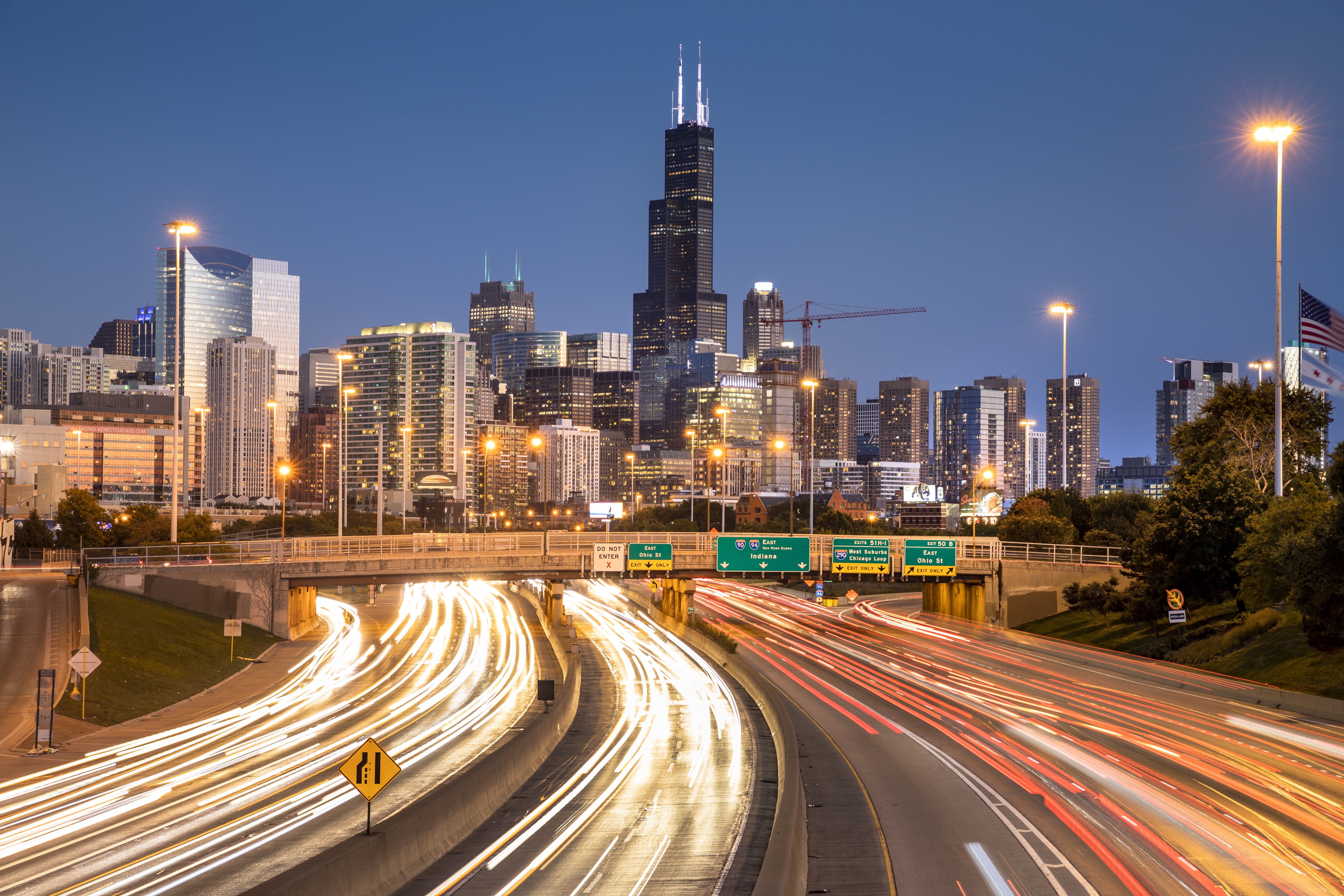There’s no better way to feel like a local than using a term that doesn’t appear on maps or in tourist brochures.
Tourist: “Can you tell me how to get to the Willis Tower observation deck?”
Chicagoan: “What’s that?”
Tourist: “You know — the second-tallest building in the country.”
Chicagoan: “Oh, you mean the Sears Tower.”
Whether it’s stubbornness, tradition, or a distaste for the practice of selling naming rights to the city’s most recognizable structures, Chicagoans refuse to use the “real” names of a lot of places in this town. Some are well known, others so little known that the informal name long ago replaced the formal name in neighborhood nomenclature.
Willis Tower
When the Sears Tower was completed, in 1973, it was the world’s tallest building, and its namesake company was America’s biggest retailer. Neither of those facts is true anymore. (Sears can’t even keep a store open at Lawrence and Wolcott. How can it keep a 110-story building?)
Sears sold the building in 1994, and the Willis Group, a London-based insurance brokerage, bought the naming rights in 2009. The following year, Chicago magazine’s Geoffrey Johnson ranked the tower 10th in his list of “Top 40 Buildings in Chicago,” writing, “The city’s giant is an engineering marvel — and I will never, ever, refer to it as the Willis.”
Cloud Gate
When sculptor Anish Kapoor was constructing his mirrored sculpture in Millennium Park, he was not amused by its comparisons to a legume. The nickname “The Bean,” he said at the time, was “completely stupid.” Kapoor formally named his work Cloud Gate, but eventually came to accept popular nomenclature.
“It’s great for it to have a colloquial name, it’s own lingo,” Kapoor told the Sun-Times in 2017. “I call it ‘The Bean,’ too.”
All the expressways
The U.S. Department of Transportation has assigned numbers to all the roadways on the federal interstate highway system. But here in Chicago, we don’t use numbers — we use names. Here’s the complete list.
I-290: The Eisenhower (or Ike)
I-55: The Stevenson
I-94: The Edens Expressway
I-90: The Kennedy
I-90/94: The Dan Ryan
I-88: The Reagan
I-294: The Tri-State Tollway
I-94 South: The Bishop Ford Freeway (formerly the Calumet Expressway)
Vito & Nick's Pizza
This Ashburn pizza joint is officially named Vito & Nick’s, after the father and son who founded it in 1932, but it’s just as commonly known as Nick & Vito’s. According to Nick’s daughter, who inherited the place, it was because Nick was just around more, you know. To avoid confusion, the restaurant listed itself under both names in the telephone book.
Woodlawn Tap
Tell Hyde Parkers “Let’s meet at Jimmy's,” and they’ll know you’re talking about Woodlawn Tap, the 55th Street watering hole. Bartender Jimmy Wilson owned and operated Woodlawn Tap for 51 years, from 1948 until he died in 1999, and became so associated with the bar that patrons called it by his name rather than the name on the window. Two decades after Jimmy drew his last draft, that’s still the case.
Guaranteed Rate Field
White Sox founder Charles Comiskey managed to keep his name on the team’s stadium even after it was torn down and rebuilt in the early 1990s. Then U.S. Cellular came along with $68 million for the naming rights. Current owner Jerry Reinsdorf, no sentimentalist, took the money, and commentators weakly tried to nickname the stadium “The Cell.” Then mortgage lender Guaranteed Rate came along with some more money, and Reinsdorf named the park after them. (It says something about the White Sox’s place in Chicago baseball lore that their ballpark’s name can be peddled so freely. The Ricketts family would never rename Wrigley Field “TD Ameritrade Stadium,” even though former owner P.K. Wrigley changed the name from Cubs Park to promote his chewing gum company.)
Some fans still call it Comiskey. Personally, I prefer “Sox Park,” because while the name may change, the team inside never will.
J & M Tap
This Ukrainian Village corner dive received the nickname “The Secret Squirrel” because of its anonymity. There’s no name on the outside, just a couple neon beer signs in the window to indicate it’s a tavern.
Lake Shore Drive
The first street known as Lake Shore Drive was a Gold Coast residential arterial. It was constructed at the insistence of 19th-century swell Potter Palmer, who wanted a convenient carriage route from his mansion to downtown. Today, that’s known as the “Inner Drive.” When the city began constructing an express route along the lakefront, it was often called the “Outer Drive” to differentiate it from the original LSD. The term is still heard on radio traffic reports.
West Ridge
So named on the city’s community area map because it lies west of Ridge Avenue, this neighborhood is known to most people who live there as West Rogers Park. Adam Langer’s novel Crossing California, which takes place in the neighborhood, refers to it as West Rogers Park. So does Driving West Rogers Park, a documentary on the Orthodox Jewish community.
Jewel-Osco
It’s “The Jewel,” OK?
875 North Michigan Avenue
Radio troll Mancow Muller used to boast that his morning show was broadcast from an antenna “at the top of the 'cock." No longer: The owners of the building formerly known as the John Hancock Center removed all references to the original name last year.
The John Hancock Insurance Company completed the tower in 1969, but today, it no longer has offices in the building. The owners are still looking to sell the naming rights.
And what will happen when they do? Easy — everybody’s going to keep calling it the Hancock, anyway.



